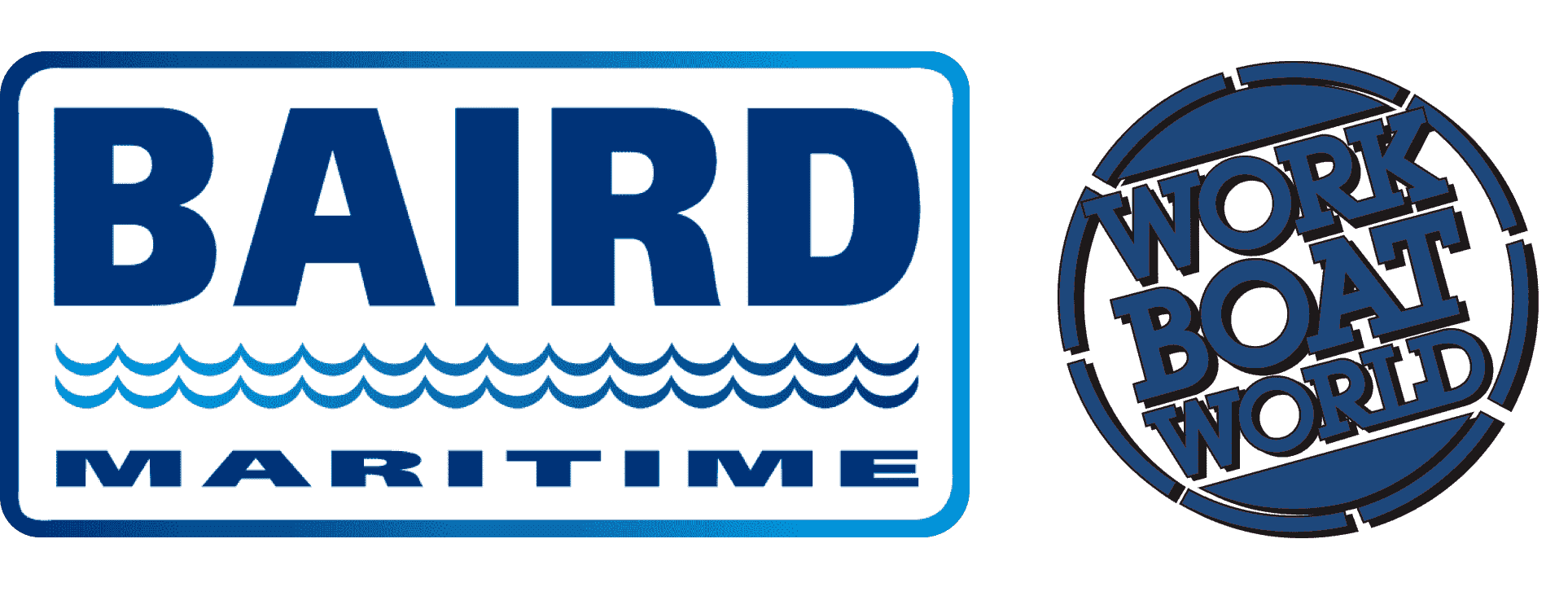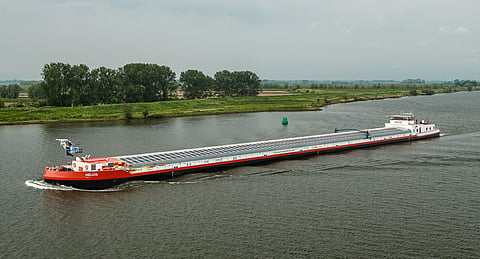VESSEL REVIEW | Helios – German 5,750cbm inland cargo ship boasts energy-saving features
Germany’s HGK Shipping recently took delivery of a new dry cargo vessel optimised for inland waters. Named Helios after the sun god in Greek mythology, the vessel was designed jointly by HGK Shipping Design Center and INEC. Construction of the hull was undertaken at Romanian shipyard Severnav while final outfitting took place at De Gerlien van Tiem in the Netherlands.
Helios has an LOA of 135 metres (443 feet), a beam of 11.45 metres (37.57 feet), a draught of 3.85 metres (12.6 feet), a displacement of 4,487 tonnes, and a diesel-electric propulsion system. The ship will be used mainly for the transport of up to 5,750 cubic metres (203,000 cubic feet) of rapeseed to the Germany facilities of food and agricultural company ADM for the later manufacture of vegetable oils for various applications.
Greater reliance on solar energy for reducing emissions
“For us and ADM, it was important to match the highest standards of modern inland waterway shipping,” owner HGK Shipping told Baird Maritime. “Beyond that, our goal was to build a ship that not only aids in the development of dry cargo shipping on European waterways, but also provides resilient and sustainable operations. Consequently, the design complies with HGK Shipping’s standards for optimising operations in shallow waters and includes a diesel-electric drive system with ‘future fuel ready’ capability.”
To satisfy the requirement for sustainable operations, the vessel is fitted with a large solar panel array with an estimated total annual energy yield of 90,000 kWh. The energy is fed directly into the onboard power supply to enable the vessel to reduce reliance on its diesel generators, thereby reducing CO2 emissions by as much as 70 tonnes during each year of operations.
“The solar power module is larger than anything found on other inland vessels,” added HGK Shipping. “Thanks to the solar panels, which are installed on the hatches, the vessel acts as its own power station.”
To enable operation on future fuels, the vessel’s midship sections can be used as installation spaces for alternative fuels or generators. Until then, however, the space will be used for cargo.
Setting a new standard for European inland shipping
The owner remarked that the vessel satisfies sustainability standards. Coupled with the diesel-electric drive, this makes the vessel ideal for customers who wish to reduce the CO2 emissions of their own products and operations.
The vessel’s propulsion arrangement includes three Veth Propulsion L-drive 500kW thrusters, a John Deere 110kVA auxiliary engine, and four Scania DC16 generators. The propulsion delivers a top speed of 10 knots and a service speed of seven knots.
“The diesel-electric drive minimises the emissions of greenhouse gases,” HGK Shipping told Baird Maritime. “This makes the vessel an important element for ‘greener’ supply chains.”
The electronics suite includes two JRC radars and an Alphatron package that consists of sonar, displays, a sounder, radios, an autopilot, compasses, AIS, and GPS. Work on the accommodation spaces was undertaken by Hoogendoorn.


